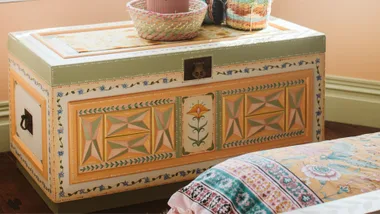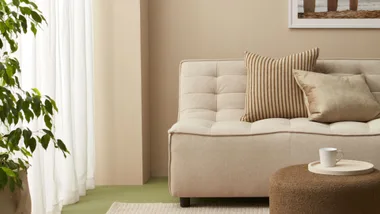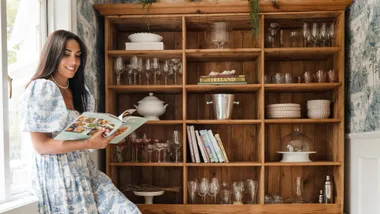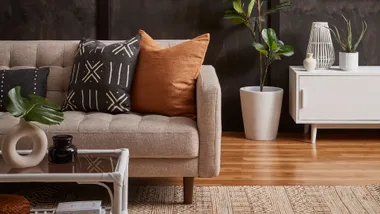I’ve recently been to Australia – did I mention that?
I may have possibly made just the odd reference to 28ºC, a 6km-long beach two minutes from our holiday rental, our pool, great bars, fabulous restaurants and, oh, the gardens as well. Let me at ‘em!
It’s not really surprising how many Kiwis will cite more job opportunities, weather, and a variety of other “betters”, as perfectly good reasons for jumping ship and crossing the ditch on a permanent basis.
There are days when I’d like to go too, but for me, the draw card would be the plants and wildlife. There’s no question that Australia has the best. Whoever designed the flora and fauna there had a huge range of shades, a massive palette, decent brushes, a sense of humour and no fear of the garish.
New Zealand, on the other hand, looks as if it were designed by someone restrained and conservative, whose colour wheel had half the shades missing. And, lucky sods, they got grevilleas. Australia’s plant designer must be congratulating him or herself on a daily basis for having provided so many gorgeous, glitzy blooms to brighten the darkest day.
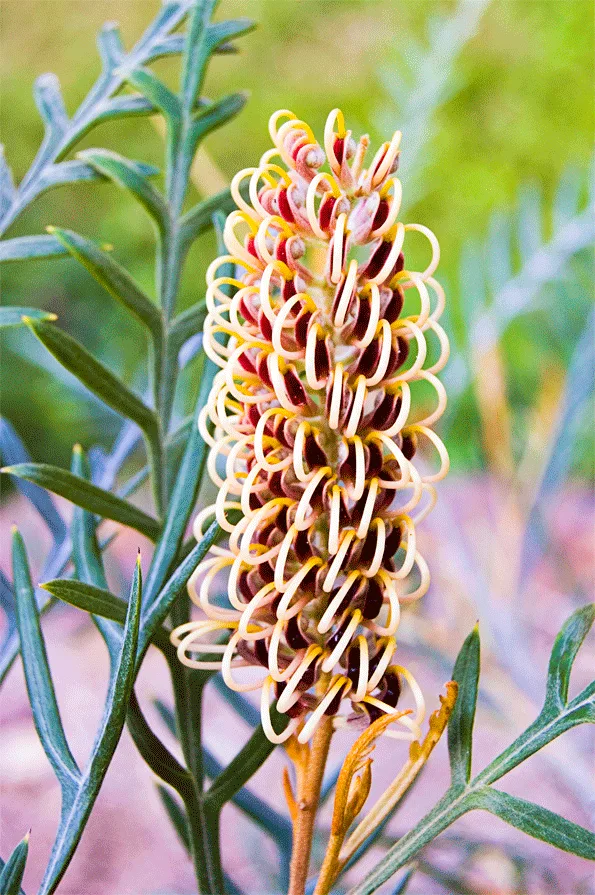
My first ever was a Grevillea Superb, which grew happily in a very wet spot under a Butia palm on the edge of the driveway. Undeterred by the adverse conditions, it had hit almost 2m by the time my neighbour knocked it over in her little Mercedes-Benz smart car and it had to be euthanised. But even being chain-sawed off at the base didn’t seem to bother it.
It’s back again – this time pretending to be a ground cover (perhaps in an effort to avoid the Mercedes-Benz) and has been smothered in salmon pink flowers for months.I took a little cruise around the Aussie native plant society website to admire it and its relatives in more detail, and of course I promptly fell in love with at least a dozen more grevilleas I will have to have.
There are about 360 members of this family, ranging in size from 50cm to 35m, and dozens are available in New Zealand. Misty pink and magnifica (pink), parallela (white), rosmarinifolia (salmon), scapigera (green and cream) and rhyolitica (deep pink) are all on my hit list, and I’ve started an affair with lanigera lutea, a disorganised ground cover with pale lemon flowers.
Cold-tolerant cultivars adapt to most soil types and growing them is pretty straightforward, but don’t be loving them to bits. They’re tough little sods, and if you douse them with compost and serious plant food, they won’t thank you for it.
They want well-drained, friable soil, and reasonably regular watering, especially in the early stages.
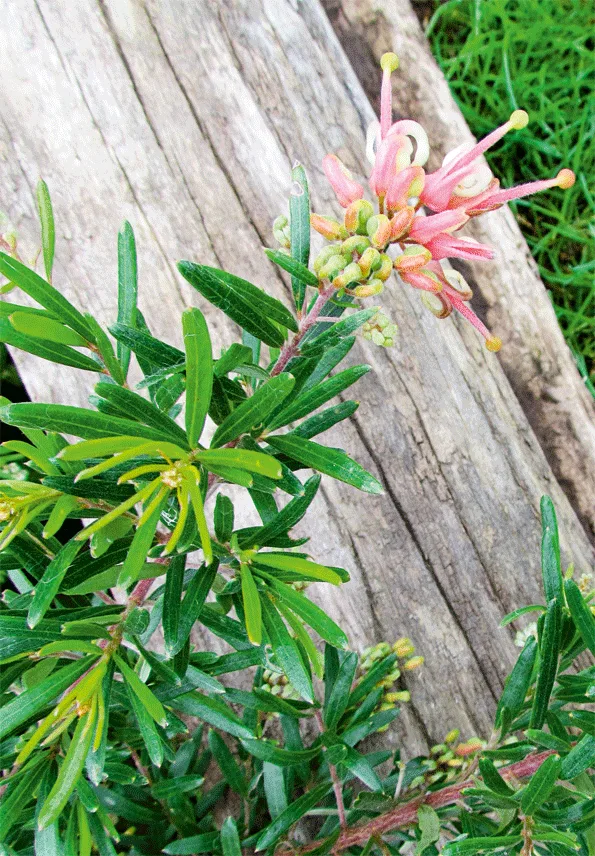
This ground cover came from sticking a cutting straight into the ground.
Again, like most Aussies, they’ll get depressed if you let them dry out, either before planting, or for quite a while afterwards. A handy pointer is to tip-prune before planting – just nip off the ends to encourage the plant to branch out and develop a thick, bushy habit. It sounds a bit mean, but because of the nature of their foliage, grevilleas can look a bit sparse. They love a good prune, so get stuck in after flowering.
If you’re going to become a fanatic, you might want to make your own. Propagation from cuttings is generally a reliable method. The plant producing your cutting material should’ve finished a growth surge. Remove young growing shoots or flowers. Cuttings about 75-100mm in length with the leaves carefully removed from the lower half to two-thirds seem to work best, and wounding the lower stem by removing a sliver of bark and treating with rooting hormone might also help. Grevilleas prefer a low-nutrient propagation mix, like 1:2 parts peat moss and coarse sand. Plant cuttings into pots, and try putting the whole pot in a plastic bag and sealing it. With luck, the new cutting will produce roots in about four to eight weeks, and can be potted up once the roots are 3-5cm long. Don’t laugh, but I’ve read you can use Vegemite as a rooting compound.
While we were in Australia, a helpful travel agent pointed us towards Silky Oaks Lodge in Northern Queensland, where tea at the Treehouse Restaurant is a must. The open-sided house overlooks the Mossman River and the view is as good as the scones. Sadly, though, there were no silky oaks, although possibly just as well since I had told The Partner the pair I planted at our place would only grow “a few metres”. In truth, Grevillea robusta, commonly known as the southern silky oak, is the largest species in the genus, growing from 18 and 35m. The leaves are long, with greyish-white undersides, and the tree will produce golden-orange, bottlebrush-like blooms in spring. Before the advent of aluminium, silky oak timber was widely used for external window joinery and for making furniture.



